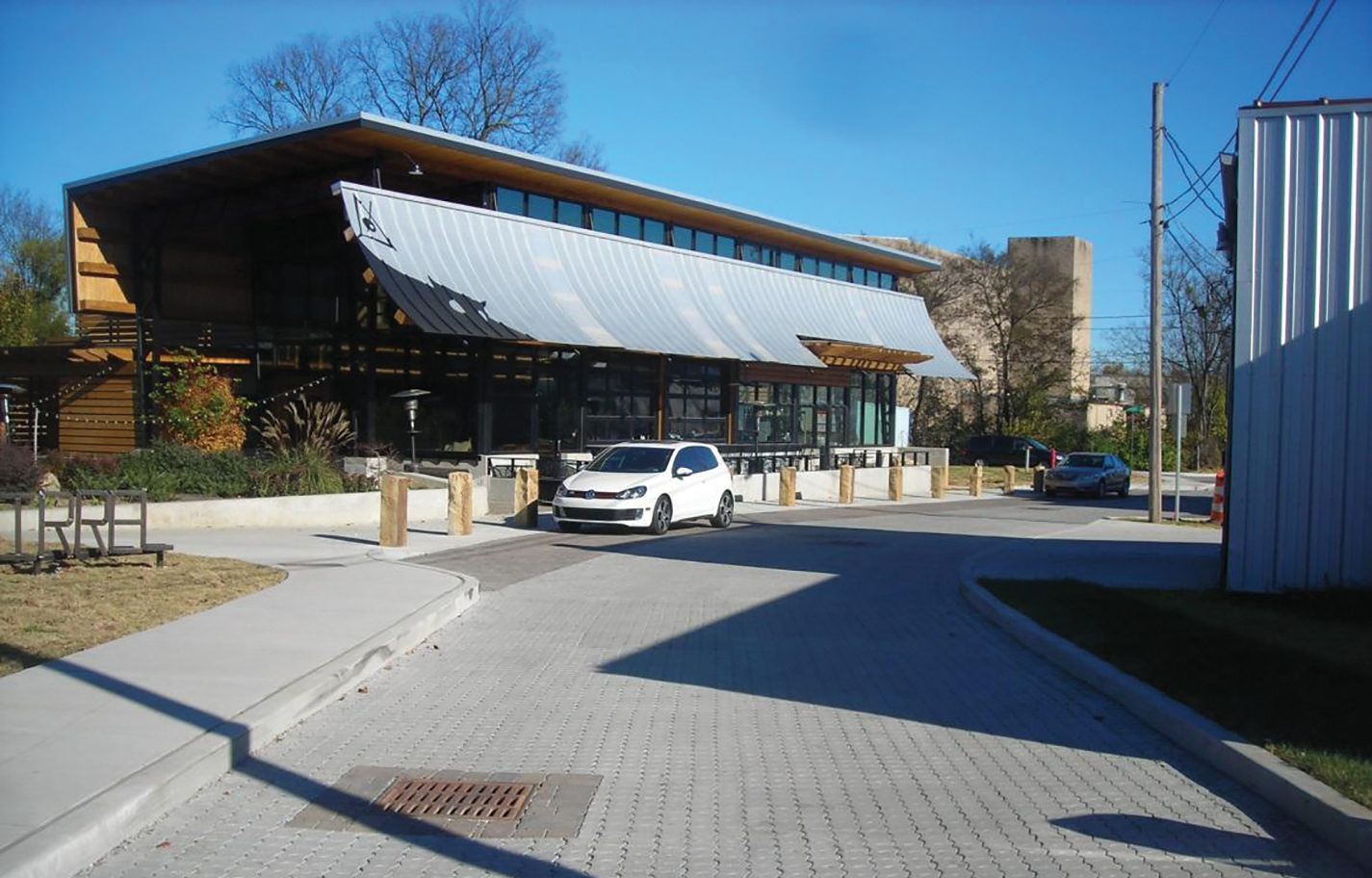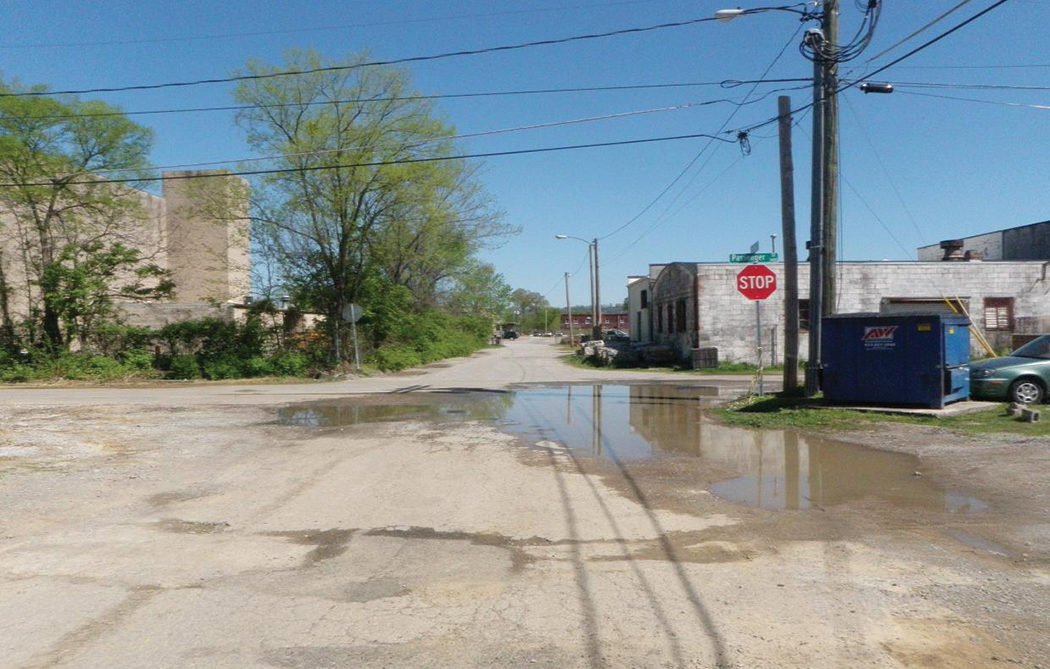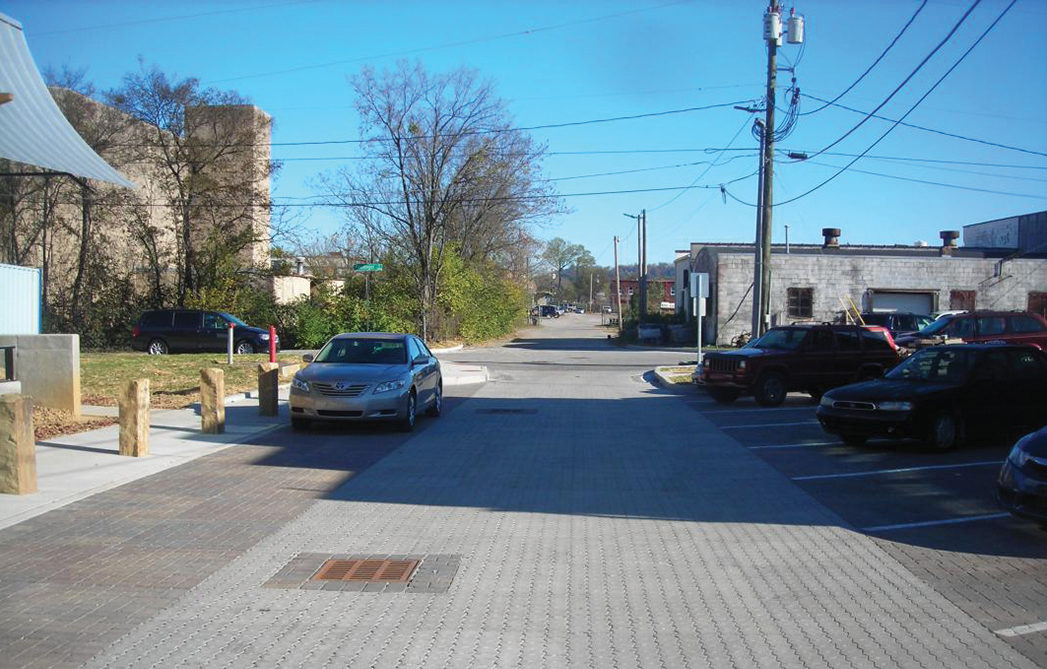
Johnson Street (credit: Chattanooga DPW)
Project Length: 400 feet
Right-of-Way Width: 47 feet
Participating Agencies: Public-Private Partnership between Chattanooga Department of Public Works and Crash Pad Hospitality
Timeline: 2012 – 2014
Cost: $350,000
Goals
Stormwater management: Capture the first inch of runoff during stormwater events and decrease the peak runoff rate during extreme rain events.
Flooding control: Eliminate nuisance flooding events in the project area.
Economic cost: Provide a more cost-effective stormwater solution than a traditional gray infrastructure treatment.
Overview
The Tennessee Department of Environment and Conservation has mandated that Chattanooga refurbish its sewer and stormwater infrastructure due to combined sewer overflow (CSO) events into the Tennessee River, a source of drinking water for communities across the Southeastern U.S. As a result, Chattanooga requires that all new developments within the combined sewer system reduce or detain stormwater runoff during rain events.
Crash Pad Hospitality, owners of a nearby popular hostel, started planning for a restaurant (The Flying Squirrel, now opened), and early on it became apparent that Johnson Street would have to be refurbished to allow the restaurant to open, as it had become a dilapidated street with significant drainage issues, causing health and safety issues for the restaurant, the hostel, and the surrounding community.
A traditional street reconstruction with new gray stormwater infrastructure was estimated to cost $327,000, and would not have included any water quality improvements or peak flow reduction during rain events, required under city rules for new development. The City of Chattanooga and Crash Pad Hospitality instead agreed to a public-private partnership to transform Johnson Street into a bicycle and pedestrian friendly green street with significant green stormwater infrastructure.
The design accommodates runoff from all nearby properties; adjacent businesses can “buy-in” to the system to avoid the need to site stormwater management practices on high-value real estate.
Design Details
Over 14,000 square feet of permeable brick pavers, paid for by the private partner, captures stormwater from the street and adjacent land.
Three feet of gravel under the street surface capture stormwater and convey it to the underlying subgrade soil at a slow rate. Excess stormwater from extreme rain events is conveyed through an 8-inch underdrain system, substantially smaller than what would be required in a traditional gray infrastructure approach.
Taking advantage of the need to fully reconstruct the street, Johnson Street was converted into a shared street, comfortable for pedestrians and bicyclists, with a design that naturally slows down motor vehicle traffic.

Johnson Street, Before (credit: Chattanooga DPW)
Keys to Success
Work closely with partners. A strong working relationship between the City of Chattanooga and the private partner, Crash Pad Hospitality, allowed for an ambitious, innovative design.
Use opportunities to accomplish multiple street goals. The final design is a strong asset both for the private developer as well as for the city, transforming a flood-prone street into a rain sponge that’s equally comfortable for pedestrians and bicyclists, while maintaining (and improving) freight and loading access for adjacent businesses.
Outcomes
The project captures 11,320 cubic feet of stormwater, equivalent to 2.25 inches of runoff, per storm event.

Johnson Street, After (credit: Chattanooga DPW)
The project is abating more stormwater than required by the new development, allowing future development along the corridor to buy into the project instead of building costly gray infrastructure.